 The 19th century was undoubtedly the most stormy and dynamic age in the history of photography. It was not just the century when photography was invented but above all the time when nearly all the photochemical processes ever used in photography were invented. It was the period during which photography covered the unimaginable distance from the daguerreotype developed in mercury vapours and the paper negative to the silver gelatine photographic film on elastic substrates and the first roll films. In the first few decades of photography, countless materials including not only silver but also iron, chromium or….. bitumen of Judea were tested in the search for the best materials and technologies to . Even though photographs were successfully made with the use of each of the above and processes such as the cyanotype, the platinotype, the oilprint, gum bichromate or carbon transfer enjoyed a considerable career and are used by artists till this day, it was silver that proved the absolute winner and its salts have been used in all of the most popular photographic processes not only of those days but also of the twentieth century when the dominance of silver based photography became absolute. This is why the longest and most intensive workshop I offer is devoted to photographic processes using silver. During the six days three participants will have a one of time opportunity not only to observe the development of photography from the talbotype until the development of photographic emulsions but will, above all, have an opportunity to gain an in depth understanding of all the leading processes of that time as well as to...
The 19th century was undoubtedly the most stormy and dynamic age in the history of photography. It was not just the century when photography was invented but above all the time when nearly all the photochemical processes ever used in photography were invented. It was the period during which photography covered the unimaginable distance from the daguerreotype developed in mercury vapours and the paper negative to the silver gelatine photographic film on elastic substrates and the first roll films. In the first few decades of photography, countless materials including not only silver but also iron, chromium or….. bitumen of Judea were tested in the search for the best materials and technologies to . Even though photographs were successfully made with the use of each of the above and processes such as the cyanotype, the platinotype, the oilprint, gum bichromate or carbon transfer enjoyed a considerable career and are used by artists till this day, it was silver that proved the absolute winner and its salts have been used in all of the most popular photographic processes not only of those days but also of the twentieth century when the dominance of silver based photography became absolute. This is why the longest and most intensive workshop I offer is devoted to photographic processes using silver. During the six days three participants will have a one of time opportunity not only to observe the development of photography from the talbotype until the development of photographic emulsions but will, above all, have an opportunity to gain an in depth understanding of all the leading processes of that time as well as to...
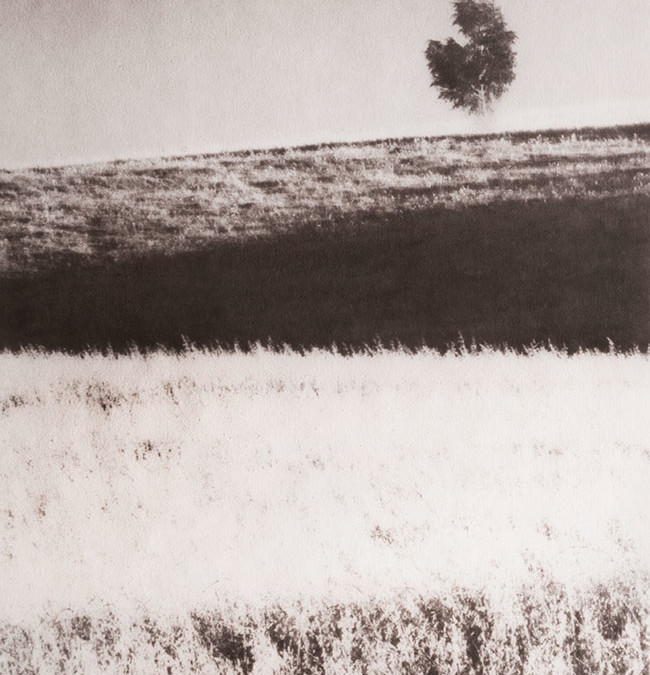 Many photographes feel really nostalgic about the chloride papers that were still manufactured in the late 1990’s. Despite their low speed that require contact printing, they offered unrivalled image quality. Quality so perfect that, even though they disappeared from the market back in 1990’s, we still keep getting asked about their availability. Others are equally nostalgic about the POP (print out papers) materials. And even though these papers stayed in manufacture for a long time, in the US until the early days of the 21st century, they too eventually disappeared from the market. Fortunately, at least the last type is probably the easiest photographic emulsion to make and even those of us who don’t have considerable experience and a professionally equipped lab can make them on their own. Though working in a home darkroom we might find competing with factory made materials difficult (if this is our aim of course), still the materials we make under such conditions will enable us to get magical results And even making photographic papers only marginally different than the factory made ones will prove possible with minimal experience. For everyone interested in this magical process we have prepared a workshop that will enable you to discover the secrets of preparing and using chloride POP emulsions both in their gelatin and collodion versions. The programme of the workshop includes: preparing a silver gelatine chloride POP emulsion learning the basics of emulsion making at the same time, preparing a collodio-chloride POP emulsion, learning different methods of coating emulsion on paper and similar substrata, learning to process POP papers including their toning, learning the most important...
Many photographes feel really nostalgic about the chloride papers that were still manufactured in the late 1990’s. Despite their low speed that require contact printing, they offered unrivalled image quality. Quality so perfect that, even though they disappeared from the market back in 1990’s, we still keep getting asked about their availability. Others are equally nostalgic about the POP (print out papers) materials. And even though these papers stayed in manufacture for a long time, in the US until the early days of the 21st century, they too eventually disappeared from the market. Fortunately, at least the last type is probably the easiest photographic emulsion to make and even those of us who don’t have considerable experience and a professionally equipped lab can make them on their own. Though working in a home darkroom we might find competing with factory made materials difficult (if this is our aim of course), still the materials we make under such conditions will enable us to get magical results And even making photographic papers only marginally different than the factory made ones will prove possible with minimal experience. For everyone interested in this magical process we have prepared a workshop that will enable you to discover the secrets of preparing and using chloride POP emulsions both in their gelatin and collodion versions. The programme of the workshop includes: preparing a silver gelatine chloride POP emulsion learning the basics of emulsion making at the same time, preparing a collodio-chloride POP emulsion, learning different methods of coating emulsion on paper and similar substrata, learning to process POP papers including their toning, learning the most important...
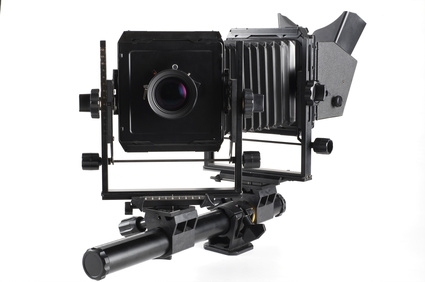 Discover one of the most potent tools in photographic history; the view camera. Learn to use various types of view cameras as well as advanced methods of large format photography such as, for example, in camera perspective control. Discover the commercially available as well as self made materials, and their properties , take pictures both using negatives and inverse developing photographic paper to create unique, in camera, positive prints without the negative. Discover the secrets of a camera essential for historical photography passionates who want to shoot wetplate or glass plate negatives, of a camera, that is still used in some of the best commercial studios. For over a hundred years, the view camera has been the tool of leading photographers. It was the view camera that was used to make virtually all 19th century images as well as most of the 20th century masterpieces. Even today, in the age of digital photography, it offers unmatched image quality and is still used, albeit usually with a digital sensor, in leading advertising studios or in atteliers of outstanding photographers such as Paolo Rovesi. Even the American government, who have recently advertised a 100 000 USD a year job for a view camera photographer, is convinced of the advantages of analog large format photography. Curiously enough the format was recently espoused by the digital world where not only digital backs (that are not truly large format) are available but also cameras with a sensor that is truly 8×10 inches. Unfortunately, for many people large format photography, using a view camera, seems to be something difficult, incomprehensible, complicated, almost impossible to master,...
Discover one of the most potent tools in photographic history; the view camera. Learn to use various types of view cameras as well as advanced methods of large format photography such as, for example, in camera perspective control. Discover the commercially available as well as self made materials, and their properties , take pictures both using negatives and inverse developing photographic paper to create unique, in camera, positive prints without the negative. Discover the secrets of a camera essential for historical photography passionates who want to shoot wetplate or glass plate negatives, of a camera, that is still used in some of the best commercial studios. For over a hundred years, the view camera has been the tool of leading photographers. It was the view camera that was used to make virtually all 19th century images as well as most of the 20th century masterpieces. Even today, in the age of digital photography, it offers unmatched image quality and is still used, albeit usually with a digital sensor, in leading advertising studios or in atteliers of outstanding photographers such as Paolo Rovesi. Even the American government, who have recently advertised a 100 000 USD a year job for a view camera photographer, is convinced of the advantages of analog large format photography. Curiously enough the format was recently espoused by the digital world where not only digital backs (that are not truly large format) are available but also cameras with a sensor that is truly 8×10 inches. Unfortunately, for many people large format photography, using a view camera, seems to be something difficult, incomprehensible, complicated, almost impossible to master,...
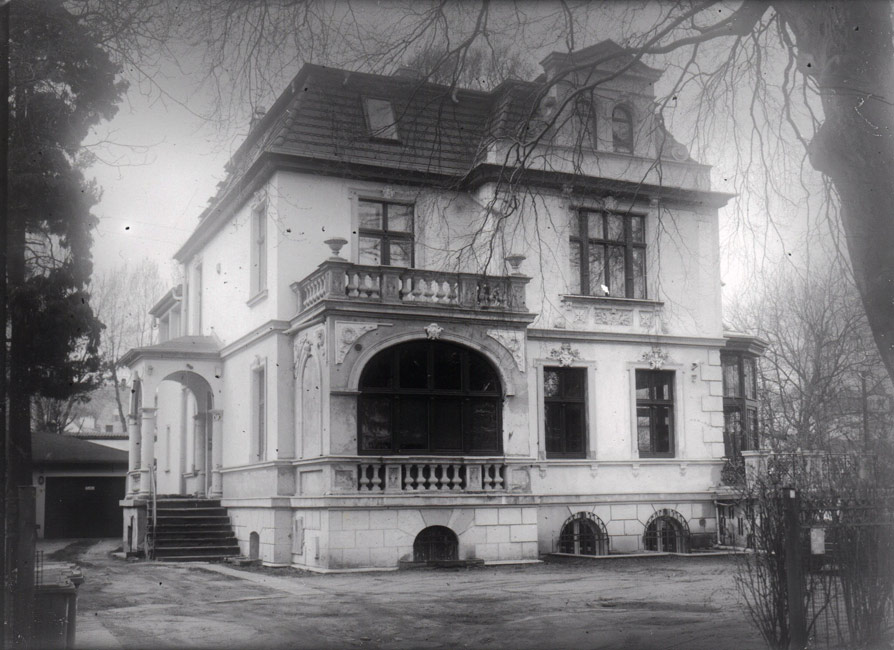 Silver gelatin dryplate, which was the real beginning of the silver based photography as we know it, is probably one of the most difficult challenges that a person passionate about historical processes can face. In order to make our own glass plate negatives we have to overcome a large number of difficulties; starting with obtaining appropriate materials, through the making the emulsion itself to the final coating of the negative and processing the exposed plates so as to make the best use of their speed without damaging the delicate layer of gelatin emulsion. Despite all these difficulties, making your own negatives is the only way if we want to recreate the appearance of the photographs from the turn of the 19th and 20th centuries; pictures recorded on glass plates coated with a thick layer of emulsion, emulsion which disperses light very different than modern negatives. Such negatives lack a lot of advantages of the modern materials, are colour blind or orthochromatic. At the same time they imbue the image with a magical quality unavailable to modern products. During the intensive, four day workshop, participants will acquire all the skills necessary to make their own emulsions and glass plate negatives. They will: learn about available materials for home emulsion making, learn to use the emulsion making equipment, learn about the basic processes taking place during the emulsion making as well as the importance of each stage for the resulting product, make a colour blind negative emulsion using modern photographic gelatins. learn to adapt pre-war recipes for use with modern materials. learn to control the speed and fogging of resulting materials,...
Silver gelatin dryplate, which was the real beginning of the silver based photography as we know it, is probably one of the most difficult challenges that a person passionate about historical processes can face. In order to make our own glass plate negatives we have to overcome a large number of difficulties; starting with obtaining appropriate materials, through the making the emulsion itself to the final coating of the negative and processing the exposed plates so as to make the best use of their speed without damaging the delicate layer of gelatin emulsion. Despite all these difficulties, making your own negatives is the only way if we want to recreate the appearance of the photographs from the turn of the 19th and 20th centuries; pictures recorded on glass plates coated with a thick layer of emulsion, emulsion which disperses light very different than modern negatives. Such negatives lack a lot of advantages of the modern materials, are colour blind or orthochromatic. At the same time they imbue the image with a magical quality unavailable to modern products. During the intensive, four day workshop, participants will acquire all the skills necessary to make their own emulsions and glass plate negatives. They will: learn about available materials for home emulsion making, learn to use the emulsion making equipment, learn about the basic processes taking place during the emulsion making as well as the importance of each stage for the resulting product, make a colour blind negative emulsion using modern photographic gelatins. learn to adapt pre-war recipes for use with modern materials. learn to control the speed and fogging of resulting materials,...
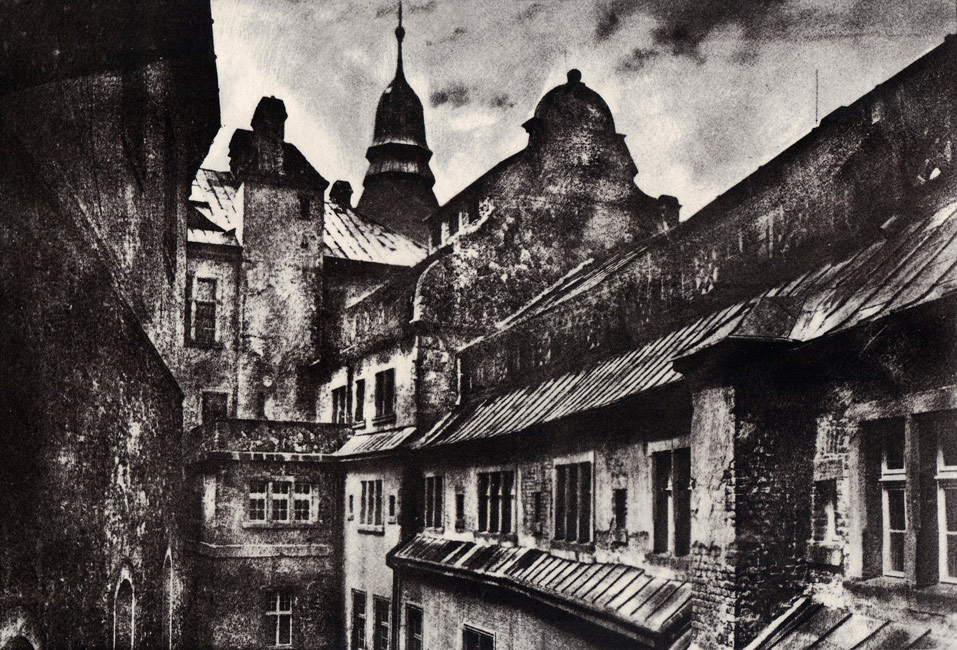 Join our oilprinting workshop and discover the magic of one of the most painterly and at the same tie creative photographic processes. Learn the method used by the greatest masters of pictorial photography, who ‘painted’ their photographic masterpieces not only with light but also with a paintbrush. Enter the world of physical, tangible photography intricately worked with paint handcoated on the matrix. Oilprint, along with its sister technique of bromoil are among the most beautiful manipulative processes associated with pictorial photography and the American photosecession. It is a painterly technique which, like few others, allows for a huge level of image manipulation and thus self expression. It’s enough to say that this was the technique of choice of such masters as Gertrude Kasabier. During the two day workshop participants will acquire all the skills necessary to start independent work with this beautiful technique. We will: learn to prepare papers for oilprinting. This way we will once and for all free ourselves from the necessity to hunt down the papers suitable for bromoil printing. learn to sensitize the papers and prepare a matrix for further oilprinting. will learn the difficult art of inking the matrix so as to bring out and manipulate the image. learn to protect the delicate surface of the prints from mechanical damage in order to ensure their maximum permanence. We will also learn what tools can be used to create oilprints and practice using them The following will be provided during the workshop: fully equipped darkroom for our practice, papers prepared for oilprinting, papers suitable for preparing oilprinting papers, printing inks, all tools necessary for creating...
Join our oilprinting workshop and discover the magic of one of the most painterly and at the same tie creative photographic processes. Learn the method used by the greatest masters of pictorial photography, who ‘painted’ their photographic masterpieces not only with light but also with a paintbrush. Enter the world of physical, tangible photography intricately worked with paint handcoated on the matrix. Oilprint, along with its sister technique of bromoil are among the most beautiful manipulative processes associated with pictorial photography and the American photosecession. It is a painterly technique which, like few others, allows for a huge level of image manipulation and thus self expression. It’s enough to say that this was the technique of choice of such masters as Gertrude Kasabier. During the two day workshop participants will acquire all the skills necessary to start independent work with this beautiful technique. We will: learn to prepare papers for oilprinting. This way we will once and for all free ourselves from the necessity to hunt down the papers suitable for bromoil printing. learn to sensitize the papers and prepare a matrix for further oilprinting. will learn the difficult art of inking the matrix so as to bring out and manipulate the image. learn to protect the delicate surface of the prints from mechanical damage in order to ensure their maximum permanence. We will also learn what tools can be used to create oilprints and practice using them The following will be provided during the workshop: fully equipped darkroom for our practice, papers prepared for oilprinting, papers suitable for preparing oilprinting papers, printing inks, all tools necessary for creating...
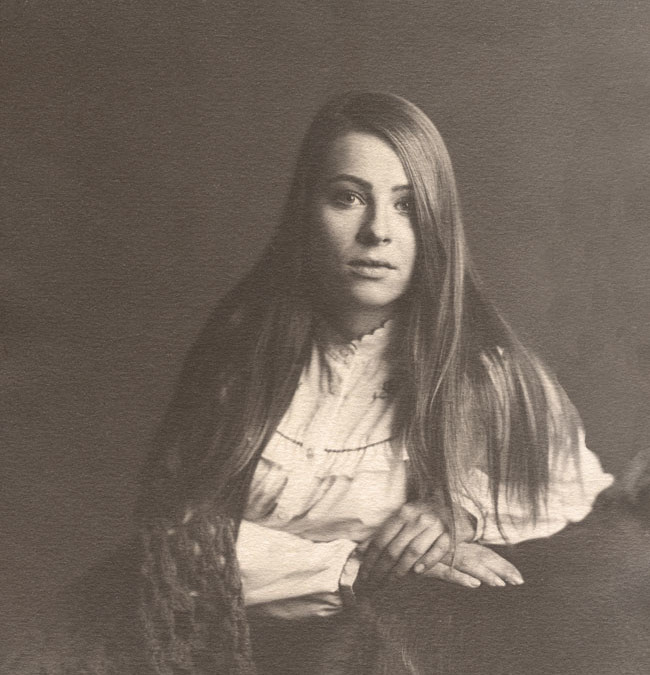 The first print making technique ever was the saltprint, and the albumen print was the first technique that made a real, industrial scale career dominating photography for dozens of years. Suffice it to say, that just one factory making albumenized paper used seventy thousand eggs per day. Both techniques may seem to be simple , in reality, however, it requires considerable knowledge and care in order to get the best results, especially if we aim at full control over the contrast and colour of the print. We offer a two day practical workshop during which we will not only learn to make salt and albumen prints, but also the more advanced elements of both processes. We will learn a variety of recipies including arrowroot paper and mat albumen, to control the print contrast and use a variety of toners. During the workshop we will learn to: Prepare matt and glossy albumenized paper using a variety of recipes, prepare salted paper using different recipes and sizes, increase the image contrast, sensitize the albumenized paper and the salted paper, expose and process the prints, prepare negatives for both processes (both large format and digital negatives), tone the prints, prepare the images for presentation in a conservator friendly, archival way. We also provide an opportunity to print your own negatives (including printing negatives from your own digital files) and to prepare photos in our studio should you wish to do so. The following will be provided for all the participants: materials necessary for salt and albumen printing including toners, papers appropriate for the techniques, albumenized papers, all necessary tools, UV light sources, practice negatives, a...
The first print making technique ever was the saltprint, and the albumen print was the first technique that made a real, industrial scale career dominating photography for dozens of years. Suffice it to say, that just one factory making albumenized paper used seventy thousand eggs per day. Both techniques may seem to be simple , in reality, however, it requires considerable knowledge and care in order to get the best results, especially if we aim at full control over the contrast and colour of the print. We offer a two day practical workshop during which we will not only learn to make salt and albumen prints, but also the more advanced elements of both processes. We will learn a variety of recipies including arrowroot paper and mat albumen, to control the print contrast and use a variety of toners. During the workshop we will learn to: Prepare matt and glossy albumenized paper using a variety of recipes, prepare salted paper using different recipes and sizes, increase the image contrast, sensitize the albumenized paper and the salted paper, expose and process the prints, prepare negatives for both processes (both large format and digital negatives), tone the prints, prepare the images for presentation in a conservator friendly, archival way. We also provide an opportunity to print your own negatives (including printing negatives from your own digital files) and to prepare photos in our studio should you wish to do so. The following will be provided for all the participants: materials necessary for salt and albumen printing including toners, papers appropriate for the techniques, albumenized papers, all necessary tools, UV light sources, practice negatives, a...








Recent Comments